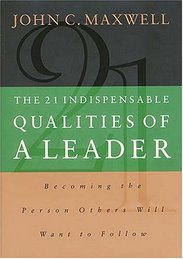In today's big "R" environment, it is very crucial to be at your best ball game in front of your customer. The market is retrieving and getting new or even retaining old customers is getting tougher. I attended one of the trainings by the guru and coach of presentation "Jerry Weissman" who has spend 20 years teaching CEOs and other executives how to deliver successful, profitable IPO road shows.
I wanted to share with my readers the take away from that insightful wisdom and inspiring training and get feedback from you on how you have enhanced your presentation skills to be the next Tim Koogle.
Weissman offers a seven-step plan for crafting your content into a compelling story as well as advice on how to conquer your fear of public speaking and to present naturally with force and conviction using the art of body language.
Presentation is a pathway to get into a new market, sell your product, present you capability, IPO launch and many more. This is your opportunity to make the first impression, whether you are a businessman or businesswoman or an ordinary citizen, your challenge is to be “well-received” by your audience.
We all have heard the most common mantra - "YOUR ACTION SPEAKS LOUDER THAN YOUR WORDS." This is the key mantra in your presentation. The presenter needs to be the advocate of the audience and the transmitter. One needs to put oneself into their audience’s place and think about their hopes, fears and passions. When the presenter is a transmitter they need to always remember the three V's that are the key elements of expressing through body language; Visual, Vocal and Verbal. These 3 dynamics affect your audience in varying degrees in their respective order.
Isn't this simple, we all may think that this is common sense, however I have sat through over 100 presentations in my professional career and except few all presentations focused on verbal communication, which has the lowest impact on the audience among the 3 V's. The training showed me how through body language one can deliver the message more effectively by using hand gestures, moving around, interacting with the audience and changing your vocals to emphasize key messages.
In addition to the Visual, Vocal, and Verbal forces that influence your audience, they are also impacted by another dynamic: empathy. In the presentation environment, the empathy is the shared feelings between the audience and the presenter, but the sharing on the audience’s part
is involuntary. I have great respect for President Barack Obama and have been following his political career since 2004. One of the presentation that I was truly impressed by his was when he presented at the Democratic National Convention. He gave a 16 minute presentation that showed energy, urgency and passion in his voice and body which resulted in similar vicarious feeling among the audience and 4 years later he is the 44th President of the United States.
Avoid these few rolling actions that may impact audience perception
* Rapid eye movement makes you as the presenter appear shifty-eyed or furtive.
* Sweeping your head back and forth makes you appear harried.
* Wrapping your body with your hands and arms appears defensive.
These action immobilizes your features, make you look fearful and impacts your voice creating low volume and at the end delivering a weak and monotonous presentation full of "um" or "ah".
Has your eyes sweep the room frantically in search of escape routes? How many of us get butterflies in our stomach when we present? To be honest, I do get butterflies in my stomach every single time I am presenting whether it to coworkers, clients, customers or even senior leadership team. As the clock starts ticking down to D-day, I think, “How will I ever find the time to get it done?” and the anxiety level keeps mounting till the Moment of Truth. One thing that has helped me by reading through Weismman's "The power presenter" book is diminish the anxiety and take charge of your content in its preparation; "PREPARATION IS KEY."
Part 2 of this will follow soon..........................
Content for this blog is taken from Jerry Weissman's training, The Power Presenter book and Soundview
Wednesday, July 29, 2009
Make an IMPACT - Power of Presentation Part 1
Monday, July 20, 2009
New Rules to do get job done in difficult times
I got to read a wonderful book "Leadership in the Era of Economic Uncertainty" by one of my favorite author "Ram Charan." The book was very inspiring so I wanted to share it with my readers my thoughts, brief summary of the book and my take on it, please do leave your feedback.
As leaders today, we all are faced with an unprecedented challenge: the world-wide economic downturn. Cash and credit crunches, sales forecast sinking and huge long tunnel of darkness that is leading to demoralized employees. These are the times when leadership is at it's true test. Specially for ones like me that are running small scale businesses. One needs to stare in the face of uncertainty and accept the changes that are coming to you. You need survive the storm and position your business to thrive in the aftermath. The golden rule is accept the reality and fight through these uncertain and difficult time with your star players.
In today's environment protecting your cash flow has become the most important challange for all the companies. Here are few steps as per the book one should vigorously pursue so one can fight back the ever-present lethal threat of lack of liquidity.
1) Shift your focus from viewing an income statement to viewing a balance sheet
2) Three internal sources of cas - earings from operations, workign capital and the sales of assets
3) Manage conservatively and lower your cash breakeven point
4) Cost reduction activities based on cash-breakeven point - Reducing work force and choosing the real change agents that will stay with the company (weaker players are replaced with high skilled people from outside), capacity
I am sure most of you know all these things, they are definitely bitter and painful, however the reality is "SURVIVAL OF THE FITTEST"
One needs to be even more hands-on and closer to their operational process than ever before, every leader in this volatile market should have a "grond-level intelligence" of his/her business. However still has the ability to see the big picture that is emerging after this monsterous downturn.
Leaders need to increase the frequency of control that they use to measure their companies progress and success. As current economic challenges shortens the life span of a business model and strategy. One should have real-time company finances to share with all level of employees in the company.
Sales and marketing forces are the eyes and ears of the company, they have become even more instrumental in these turbulent times. Brand value and identity has become even more valuable for the company to be a long-term differentiator. One needs to make sure that the customer's experience lives up to the promise of the brand. Here are few ways that Ram Charan's book suggests:
* First bring your focus to front line- evaluate the sales and marketing team restructure them if necessary and reinstate the goals, objectives and values of the company.
* Second scrub through the customers list and assign a customer value for them to effectively decide the long-term customers. This will help you to narrow the customers that you want to grow and get you biggest bank for your buck.
* Third assign some aggressive and business-savy salespeople to a business development role.
Refocusing on Innovation is a key for a company to hold its strong standing in future. Leaders need to re-think the R&D budget and not completly cut it. One should not solely focus on improving existing products. R&D is the fuel that will keep the company running in future.
Quick Summary for Today's Leaders
1) Recognize and accept reality
2) Be hands-on/ground-level intelligence
3) Be bold and transparent
4) Deterime strategic changes and watch your risk
5) Protect your core - people, asset, projects
6) Listen to people at all levels
7) Be honest about the company's future and financial health
8) Be constructive and specific in your actions
9) Trainee your people to communicate cross-functionally
10) Focus on synchronization
6 Essential Leadership Traits in Hard Times
1) Honesty and Credibility
2) The ability to Inspire
3) Real-time connection with reality
4) Realism tempered with optimisim
5) Managing with Intensity
6) Boldness in building for the future.



